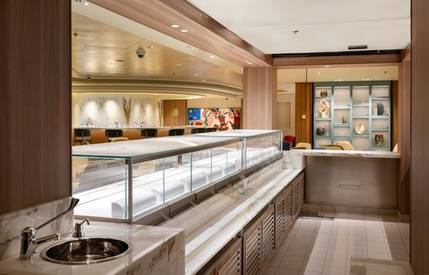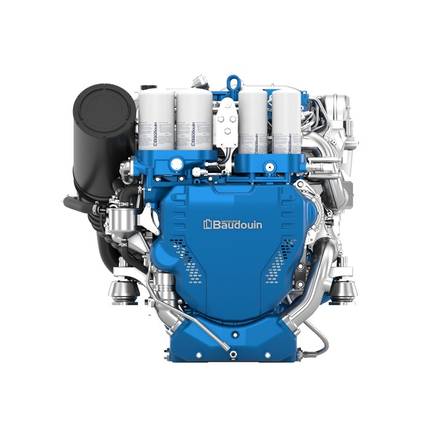DoN Budget Request for FY08 Addresses Near and Long-term Needs
In testimony before the House Armed Services Committee, Secretary of the Navy (SECNAV) Donald C. Winter, Chief of Naval Operations (CNO) Adm. Mike Mullen and Commandant of the Marine Corps Gen. James Conway thanked lawmakers and the American people for their continued support and stressed the impact of DoN’s FY08 budget request on future readiness. Winter said that although supporting Marines and Sailors in the field and at sea remained a near-term imperative, the Department must provide for "the critical needs of the Navy and Marine Corps of the future." "To that end, the Department of the Navy is pursuing an unprecedented modernization program across the full spectrum of our weapons platforms in both the Navy and Marine Corps," Winter explained. "This drive to transform the force is necessary and vital to our national security." Winter said the transformation of the sea services underway includes a new generation of ships, submarines, and aircraft -- with programs in development, production, or already in operation with the fleet. "Faced with a dangerous, uncertain world -- with terrorist enemies, states that actively support or condone them, and rising powers with intentions and capabilities that lack transparency," he said, "we have no choice but to improve our own capabilities." Mullen echoed the Secretary’s sense of urgency, saying the Navy is ready to meet these challenges.
“Through the Fleet Response Plan, we continue to meet the demands of the Combatant Commanders for trained, flexible and sustainable forces, with six Carrier Strike Groups available on 30 days notice and an additional Carrier Strike Group ready to surge within 90 days,” Mullen said. Mullen told committee members the Navy’s FY08 budget request will help keep the Navy strong and reflects his top three priorities: sustaining combat readiness, building a future Navy, and developing 21st century leaders. "The sound investments we made in recent years to improve fleet capacity and capabilities have paid off," he said. "We must now re-energize our procurement accounts to maintain those capabilities in the future.” The proposed budget represents a $12 billion increase from last year’s baseline appropriations. It provides for improved facilities for schools and child care and a three percent across-the-board pay increase for service members.
An average O-3 would see his pay increase by about $1,657 if the budget request passes, and the average E-6 would see an increase of $1,099. The FY08 ship construction and aviation procurement plan includes the first CVN-21 aircraft carrier, a Virginia-class submarine, one amphibious assault ship, one logistics ship and three Littoral Combat Ships. It also calls for 18 EA-18Gs; 24 F/A-18E/Fs; 21 MV-22 Ospreys, unmanned aerial vehicles, mine-resistant ambush protected vehicles (MRAP vehicles) and the continued development and procurement of F-35 joint strike fighters. The budget allots $14.7 billion for shipbuilding, an increase of about $3.2 billion over this year. Mullen told lawmakers he deliberately made no changes to the 30-year shipbuilding plan the Navy submitted with next year’s budget. It was important, he explained, to keep quantities of ships in the FY08 plan the same as those in submitted in FY07 to foster stability in the shipbuilding industry. “We continue to evaluate, as we must, the impact global developments have had on the plan’s original risk assumptions,” he said. “But I remain committed to a stable shipbuilding program and to pursuing, with our partners in industry, the efficiencies required to make it affordable.”
Winter noted that the Navy and the Marine Corps have reported cost overruns on the first hull of the Lockheed Martin Littoral Combat Ship and the Expeditionary Fighting Vehicle, but that aggressive efforts are underway to develop more efficient acquisition strategies. “We are working on solving the problems that have arisen so that we can deliver vitally needed capabilities to our warfighters,” said Winter. “Both of these programs represent the kinds of capabilities that the future Navy and Marine Corps will need to fight and win the wars of tomorrow.” Marines and their families will also be well served by the Department’s budget request, noted Conway, pointing out that although they have been pushed hard and strained by the operational tempo of the war, morale has never been higher. “They know full well what the nation expects of it Marines in a time of war, and they are shouldering that duty with selflessness and courage,” he said. Conway lauded the proposed increase of Marine Corps end strength to 202,000 by FY11, saying it will “greatly reduce the strain on the individual Marine and on our institution as whole.” It will also, he stated, improve the deployment-to-dwell ration in critical units, some of which are deployed for seven months and then home for seven months. But the Commandant was quick to correct the record on the assumption that the increased end strength is designed to support the recent plus-up of forces in Iraq. “This is not the case,” he asserted. “Our request for additional Marines is separate from, indeed it pre-dated by several weeks, the announcement of the plus-up.”
Conway assured lawmakers that all Marines going into Iraq’s Al Anbar province will be properly trained and equipped. He also stressed the urgent need for more MRAP vehicles to help protect Marines from the improvised explosive device (IED) threat. The V-shaped-bottom MRAP vehicle is designed to fill the gap between the flat-bottomed Humvees being used today and the Joint Tactical Light Vehicle, which is designed to offer greater protection against IEDs. The MRAP family of vehicles includes both light utility vehicles and medium trucks.
The Marine Corps received enough funding for this fiscal year to buy 805 MRAP vehicles in the baseline budget. They also requested funding to procure 244 vehicles in the FY07 wartime supplemental and additional funding in the FY08 GWOT supplemental for 255 vehicles. In addition to this, the Marine Corps requested $2.8 billion in the FY08 unfunded list to buy 2,700 more. All three leaders were quick to point out that, in addition to the service of Sailors and Marines in Iraq and Afghanistan, thousands of others are accomplishing the Navy-Marine Corps mission around the world. On their behalf, Winter asked Congress for special attention to shortfalls in funding for Basic Allowance for Housing and Base Realignment and Closure activities. “We owe it to the Sailors and Marines -- and their families -- to find a speedy resolution of these issues,” he said. Source: NavNews












